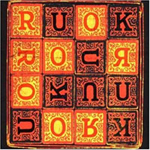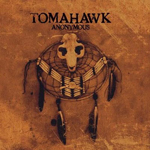This review page is supported in part by the sponsors whose ad banners are displayed below |
 |
 |
For source duties my rack tends to be a combination of Foobar-steered laptop with North Star’s USB dac32. That’s also what the Ayre spinner began being compared against. Contrary to the maker’s recommendation in the user manual I had the digital filter at measure instead of listen for all my sessions. I found the tad of extra treble presence both more right and satisfying.
|
I began with Brit electronic group Meat Beat Manifesto’s 2002 Ruok? and "Spinning Round". The Ayre CX-7e handled the very challenging massive infrasonic world with more nonchalance and less violence. Beat detail of bass runs remained intelligible but seemed on a longer leash whilst the synth snares were less dry and jaggedly explosive. Where despite density this piece exhibited clear tautness and dimensionally a more ‘in-yer-face’ presentation before, it remained energetic but somewhat more chilled now - less offensive, more flowing. Some listeners could prefer this as being less pushy or more musically cultured. I have a soft spot for the NorthStar’s effrontery - er, upfrontery. Either player shared the same non-grainy ‘non-digital’ treble and perfectly balanced midrange.
|
 |
|
|
 |
|
 |
My Fonel Simplicité created more dynamic beats and point focus on Skinny Puppy’s intelligently noisy "Dig It" from 1986’s Mind: The Perpetual Intercourse as well. The Ayre turned tables on Tomahawk’s "Mescal Rite 1" from Anonymous, an occasionally gripping very non-New-Age’y re-imagination of traditional Indian songs. Due to middling production values, the percussion in the upper mids/lower treble usually gets a bit hard and stressy for my sensibilities. The American deck was clearly more pleasant without—and that was the relevant trick—shaving off extension, air or microdynamic expressiveness.
|
|
|
|
|
|
Clearly the Ayre isn’t extraordinarily pronounced or fresh up high. By tendency it's more on the silky mild side of things. Such hairsplitting quickly loses relevance of course when one observes just how transparent and believable the CX-7e MP handles hi-hats and cymbals. In matter of tone colors, both Ayre machines were cut from the same cloth. A/B’d against my very colourful Fonel again, I was pleasantly surprised how the interplay of violin and piano on Tonbruket’s "Decent Life" from Dig it to the End (the highly commendable second release around ex E.S.T. bassist Dan Berglund) was even more organic over the Ayre; as though a final remaining film of gray had evaporated.
|
|
|
|
 |
On soundstaging and general plasticity the CX-7e struck me as amongst the best I’ve yet encountered with CD players. There wasn't even a trace of flatness, fuzziness or diffusion. On Tomahawk’s "Cradle Song" the Ayre instead managed to combine the howling wolf and crackling open fire samples with somewhat lost guitar and faint hi-hat into an impressive window onto a different reality. To conjure up realistic space from a few sparse ingredients against mostly bare nothing really is one of the more advanced tricks of higher fi. Even transient micro data like the tiny metallic treble tinkles in "Ghost Dance" stayed put, defined and contrasted while tension rose and complexity increased. Clearly this is a very resolved machine.
|
|
Even though ‘high resolution’ often suggests analytical precision, the Ayre AX-7e and CX-7e MP would beg to differ. Timbres, soundscape illusion, detail magnification and microdynamics all are executed flawlessly in a context of pleasing musical flow and unambiguous long-term friendliness. Purity and low distortion combine into what seems less outgoing hifi rocker and more comfortable peacefulness. On price/performance I was particularly surprised by the integrated—a definite must audition!—but should explain than speakers excepted, I’d first invest in a better amp because there’s less performance differential between good CD players. I’d pair either Ayre with neutral speakers and when in doubt those boxes which naturally excel at explosive dynamics.
|
|
|
Both machines carry the same designer imprimatur and are characterized by:
- Very accurate, dense but differentiated tone colors which serves midrange realism particularly well.
- A by tendency more silky/soft than wiry/crisp or fresh/sparkly treble that’s nonetheless airy, transparent and microdynamically expressive.
- Particularly with the amplifier a very fleet footed bubbly bass which on extension and weight is mature with both decks but not particularly dialled for macrodynamics, control or shove. Neither Ayre is heavy on the attack.
- Excellent soundstaging that’s immaculate with localization sharpness, plasticity, sorting and blackgrounds. There’s no emphasis on frontal nearfield energy and the perspective is more relaxed midfield.
- High but never obvious resolution that's free from analytical tendencies.
- Impeccable workmanship and clean non-nonsense design. With the player some will miss digital inputs. One teary and one laughing eye look at the Cardas terminals which are easy to use and make perfect contact but won’t accept bananas. While RCA compatible, each machine really is optimized for XLR operation.
Facts:
Ayre AX-7e
- Dimensions and weight: 43.5 x 12 x 33cm (W x H x D), 12kg
- Trim: Silver
- I/O ports: 3 x RCA, 2 x XLR inputs, single-pair speaker terminals
- Output power: 60wpc into 8Ω
- Power consumption in standby/at idle: ca. 9/50w respectively
- Other: A returned warranty card nets three free Ayre Myrtle wood blocks as footers; optional metal remote wand for €350
- Warranty: 5 years with registration
Ayre CX-7e MP
- Dimensions and weight: 43.5 x 12 x 33cm (W x H x D), 11.5kg
- Trim: Silver
- Outputs: RCA/XLR analog, AES/EBU digital
- Power consumption in standby/at idle: ca 9w each
- Other: Selectable digital filter, a returned warranty card nets three free Ayre Myrtle wood blocks as footers; optional metal remote wand for €350
- Warranty: 5 years with registration
|
|
redaktion @ fairaudio.de
|
 |
 |
|
 |